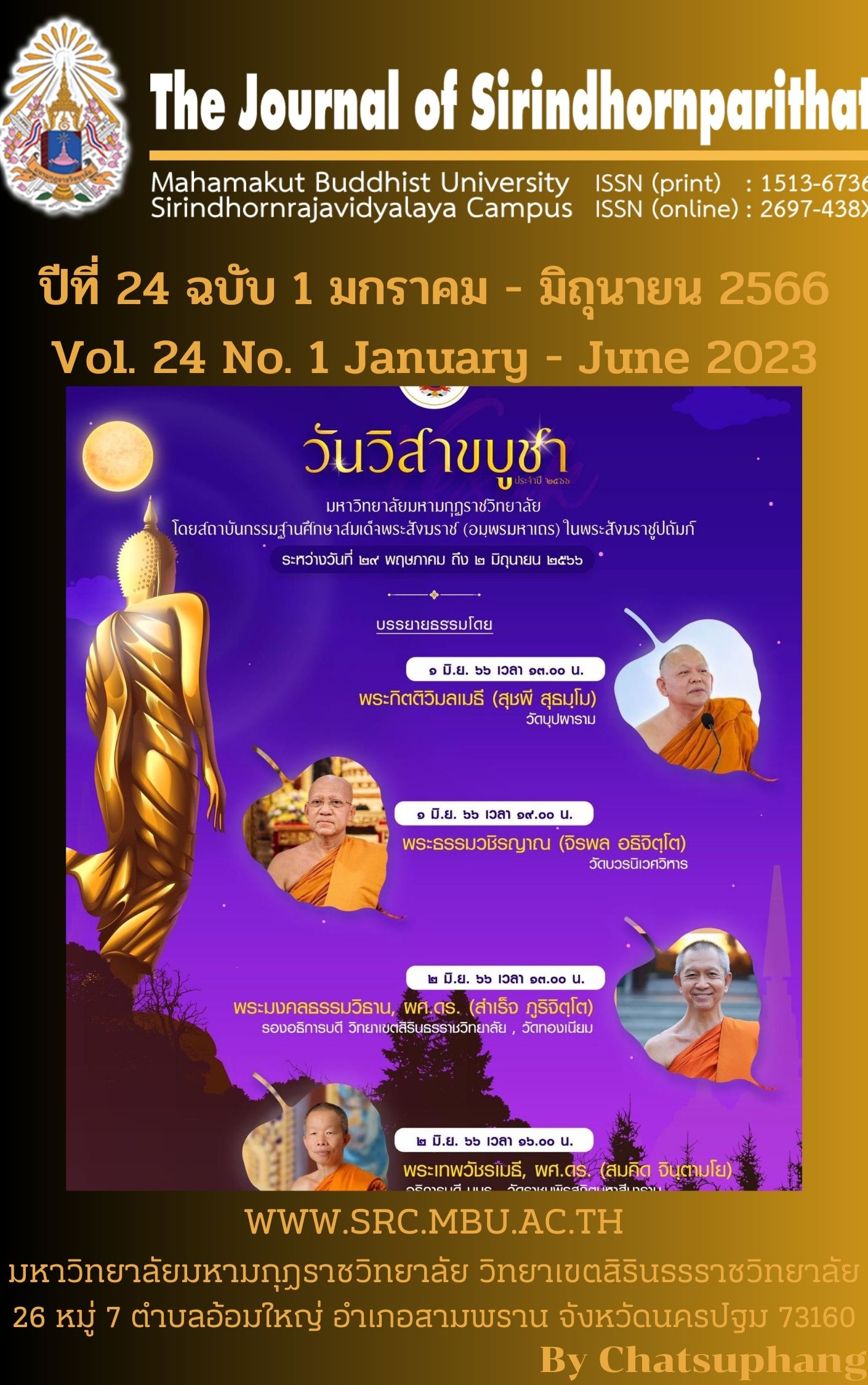ปัจจัยที่ส่งผลต่อการเป็นองค์การแห่งการเรียนรู้ของสถานศึกษา สังกัดสำนักงานเขตพื้นที่การศึกษาประถมศึกษาชลบุรี เขต 2
คำสำคัญ:
องค์การแห่งการเรียนรู้, นัยสำคัญทางสถิติ, สถานศึกษาขั้นพื้นฐานบทคัดย่อ
การวิจัยครั้งนี้วัตถุประสงค์เพื่อ (1) ศึกษาระดับปัจจัยด้านภาวะผู้นำ ด้านการจูงใจ ด้านโครงสร้างองค์การ ด้านวัฒนธรรมองค์การ ด้านบรรยากาศที่ส่งเสริมสนับสนุนของสถานศึกษา (2) ศึกษาระดับการเป็นองค์การแห่งการเรียนรู้ของสถานศึกษา (3) ศึกษาความสัมพันธ์ระหว่างปัจจัยที่ศึกษากับการเป็นองค์การแห่งการเรียนรู้ของสถานศึกษา และ (4) ศึกษาปัจจัยส่งผลต่อการเป็นองค์การแห่งการเรียนรู้ของสถานศึกษา สังกัดสำนักงานเขตพื้นที่การศึกษาประถมศึกษาชลบุรี เขต 2 กลุ่มตัวอย่าง ได้แก่ ครู ในสถานศึกษาขั้นพื้นฐาน สังกัดสำนักงานเขตพื้นที่การศึกษาประถมศึกษาชลบุรี เขต 2 จำนวน 302 คน ได้มาจากการสุ่มกลุ่มตัวอย่างแบบหลายขั้นตอน (Multi-stage random sampling) เครื่องมือที่ใช้ในการวิจัยเป็นแบบสอบถาม สถิติที่ใช้ในการวิเคราะห์ข้อมูล ได้แก่ ค่าเฉลี่ย ส่วนเบี่ยงเบนมาตรฐาน การวิเคราะห์สัมประสิทธิ์สหสัมพันธ์แบบเพียร์สัน และการวิเคราะห์การถดถอยพหุคูณ ผลการวิจัยพบว่า 1) ปัจจัยด้านภาวะผู้นำ ด้านวัฒนธรรมองค์การ ด้านบรรยากาศที่ส่งเสริมสนับสนุน ด้านการจูงใจ และด้านโครงสร้างองค์การ โดยภาพรวมมีค่าเฉลี่ยอยู่ในระดับมาก 2) องค์การแห่งการเรียนรู้ของสถานศึกษา สังกัดสำนักงานเขตพื้นที่การศึกษาประถมศึกษาชลบุรี เขต 2 ด้านแบบแผนความคิด ด้านความรอบรู้แห่งตน ด้านการเรียนรู้ร่วมกันเป็นทีม ด้านการคิดอย่างเป็นระบบ และด้านการสร้างวิสัยทัศน์ร่วมกัน โดยภาพรวมมีค่าเฉลี่ยอยู่ในระดับมาก 3) ความสัมพันธ์ระหว่างปัจจัยด้านภาวะผู้นำ ด้านการจูงใจ ด้านโครงสร้างองค์การ ด้านวัฒนธรรมองค์การ ด้านบรรยากาศที่ส่งเสริมสนับสนุนกับการเป็นองค์การแห่งการเรียนรู้ของสถานศึกษา สังกัดสำนักงานเขตพื้นที่การศึกษาประถมศึกษาชลบุรี เขต 2 มีความสัมพันธ์ในทางบวกที่ระดับมากที่สุด อย่างมีนัยสำคัญทางสถิติที่ระดับ .05 และ 4) ปัจจัยด้านบรรยากาศที่ส่งเสริมสนับสนุน ปัจจัยด้านด้านวัฒนธรรมองค์การ ปัจจัยด้านการจูงใจ และปัจจัยด้านโครงสร้างองค์การ ส่งผลต่อการเป็นองค์การแห่งการเรียนรู้ของสถานศึกษาขั้นพื้นฐานสังกัดสำนักงานเขตพื้นที่การศึกษาประถมศึกษาชลบุรี เขต 2 อย่างมีนัยสำคัญทางสถิติที่ระดับ .05 สามารถร่วมกันพยากรณ์องค์การแห่งการเรียนรู้ ได้ร้อยละ 84.60
เอกสารอ้างอิง
กชนันท์ ศุขนิคม. (2562). ปัจจัยที่ส่งผลต่อการเป็นองค์การแห่งการเรียนรู้ของสำนักงานคณะกรรมการส่งเสริมการศึกษาเอกชน. ปริญญาครุศาสตรมหาบัณฑิต. สาขาวิชาการบริหารการศึกษา มหาวิทยาลัยราชภัฏสวนสุนันทา.
บุญชม ศรีสะอาด และบุญส่ง นิลแก้ว. (2535). การวิจัยเบื้องต้น. (พิมพ์ครั้งที่6). มหาสารคาม: มหาวิทยาลัยศรีนครินทรวิโรฒ.
เปรมศิริ เนื้อเย็น. (2556). ปัจจัยที่ส่งผลต่อการเป็นองค์การแห่งการเรียนรู้ของสถานศึกษา สังกัดสำนักงานเขตพื้นที่การศึกษาประถมศึกษาเพชรบุรี เขต 2. วิทยานิพนธ์ครุศาสตรมหาบัณฑิต สาขาวิชาการบริหารการศึกษา มหาวิทยาลัยราชภัฏเพชรบุรี.
พรรษา ไพรเลิศ. (2557). ปัจจัยการบริหารที่ส่งผลต่อการเป็นองค์การแห่งการเรียนรู้ของสถานศึกษา สังกัดสำนักงานเขตพื้นที่การศึกษาประถมศึกษาปราจีนบุรี เขต 1. วิทยานิพนธ์ครุศาสตรมหาบัณฑิต สาขาวิชาการบริหารการศึกษา มหาวิทยาลัยราชภัฏราชนครินทร์.
พิณสุดา สิริธรังศรี. (2555). การรู้สารสนเทศและกลไกการเรียนรู้ในยุคโลกาภิวัฒน์. ปริญญาครุศาสตรมหาบัณฑิต. สาขาวิชาการบริหาร มหาวิทยาลัยธุรกิจบัณฑิตย์.
ราชกิจจานุเบกษา. (2546). พระราชกฤษฎีกาว่าด้วย หลักเกณฑ์และวิธีการบริหารกิจการบ้านเมืองที่ดี พ.ศ. 2546. เล่ม 120/ตอนที่ 100ก/หน้า 1/9 ตุลาคม 2546.
รูสนานี ยาโม. (2555). ปัจจัยการบริหารที่ส่งผลต่อสภาพการเป็นองค์การแห่งการเรียนรู้ของสถานศึกษาในสามจังหวัดชายแดน. ปริญญาศึกษาศาสตรมหาบัณฑิต. สาขาวิชาการบริหารการศึกษา มหาวิทยาลัยสงขลานครินทร์.
วรรณะ บุษบา. (2553). ปัจจัยที่ส่งผลต่อการเป็นองค์การแห่งการเรียนรู้ของสถานศึกษาสังกัดสำนักงานคณะกรรมการการศึกษาขั้นพื้นฐาน. ปรัชญาดุษฎีบัณฑิต. สาขาการบริหารการศึกษา. มหาวิทยาลัยสยาม.
สันติธร ภูริภักดี. (2563). การเป็นองค์การแห่งการเรียนรู้ [ออนไลน์]. เข้าถึงข้อมูล วันที่ 30 พฤศจิกายน 2563. จาก www.tci-thaijo.org.
สำนักงานเขตพื้นที่การศึกษาประถมศึกษาชลบุรี เขต 2. (2563). สารสนเทศทางการศึกษา. ชลบุรี: สำนักงานเขตพื้นที่การศึกษาประถมศึกษาชลบุรี เขต 2.
สำนักงานคณะกรรมการพัฒนาการเศรษฐกิจและสังคมแห่งชาติ. (2562). ยุทธศาสตร์ชาติ (พ.ศ. 2561-2580). กรุงเทพฯ: พิมพลักษณ์.
สำนักงานปลัดกระทรวงศึกษาธิการ. (2560). แผนปฏิบัติราชการประจำปีงบประมาณ พ.ศ. 2560. ชลบุรี: สำนักงานปลัดกระทรวงศึกษาธิการ.
สุภาวดี ลาภเจริญ. (2561). ปัจจัยการบริหารที่ส่งผลต่อการเป็นองค์การแห่งการเรียนรู้ของโรงเรียนสาธิตมหาวิทยาลัยรามคำแหง. วิทยานิพนธ์ศึกษาศาสตรมหาบัณฑิต สาขาวิชาบริหารการศึกษา มหาวิทยาลัยเกษตรศาสตร์.
Avolio, J. & Bernard M. (1999). ‘Transformational Leadership, Charisma, and Beyond’. In J.G., Hunt et al. (Eds.) Emerging Leadership vistas. Lexington Books.
Best, J. W. & Khan, J. V. (1993). Research in Education (7th ed.). Boston: Allyn Bacon. Cengage Learning International Student Edition.
Goh M. and Pinaikul P. (1998). “Logistics management practices and development in Thailand.” Logistics Information Management 11, 6: 359-369.
Hoy, W. & Miskel, C. (2001). Educational Administration: Theory, Research and Practice (6th ed.). New York: McGraw-Hill.
Krejcie, R. V., & Morgan, D. W. (1970). Determination sample size for research activities. Education and Psychology Measurement.
Reece, P. D. (2004). Universities as Learning Organizations: How can Australian Universities become Learning Organization?. Unpublished Doctoral Dissertation, Murdoch University.
Senge, P. M. (1990). The Fifth Discipline: The Art and Practice of the Learning. Organization. New York: Doubleday.
Senge, P. M. (2000). The fifth discipline: The art and practice of the learning organization, London: Random House.

ดาวน์โหลด
เผยแพร่แล้ว
ฉบับ
ประเภทบทความ
สัญญาอนุญาต
ลิขสิทธิ์ (c) 2023 มหาวิทยาลัยมหามกุฏราชวิทยาลัย วิทยาเขตสิรินธรราชวิทยาลัย

อนุญาตภายใต้เงื่อนไข Creative Commons Attribution-NonCommercial-NoDerivatives 4.0 International License.
บทความที่ได้รับการตีพิมพ์เป็นลิขสิทธิ์ของ มหาวิทยาลัยมหามกุฏราชวิทยาลัย วิทยาเขตสิรินธรราชวิทยาลัย
ข้อความที่ปรากฏในบทความแต่ละเรื่องในวารสารวิชาการเล่มนี้เป็นความคิดเห็นส่วนตัวของผู้เขียนแต่ละท่านไม่เกี่ยวข้องกับหาวิทยาลัยมหามกุฏราชวิทยาลัย วิทยาเขตสิรินธรราชวิทยาลัย และคณาจารย์ท่านอื่นๆในมหาวิทยาลัยฯ แต่อย่างใด ความรับผิดชอบองค์ประกอบทั้งหมดของบทความแต่ละเรื่องเป็นของผู้เขียนแต่ละท่าน หากมีความผิดพลาดใดๆ ผู้เขียนแต่ละท่านจะรับผิดชอบบทความของตนเองแต่ผู้เดียว



